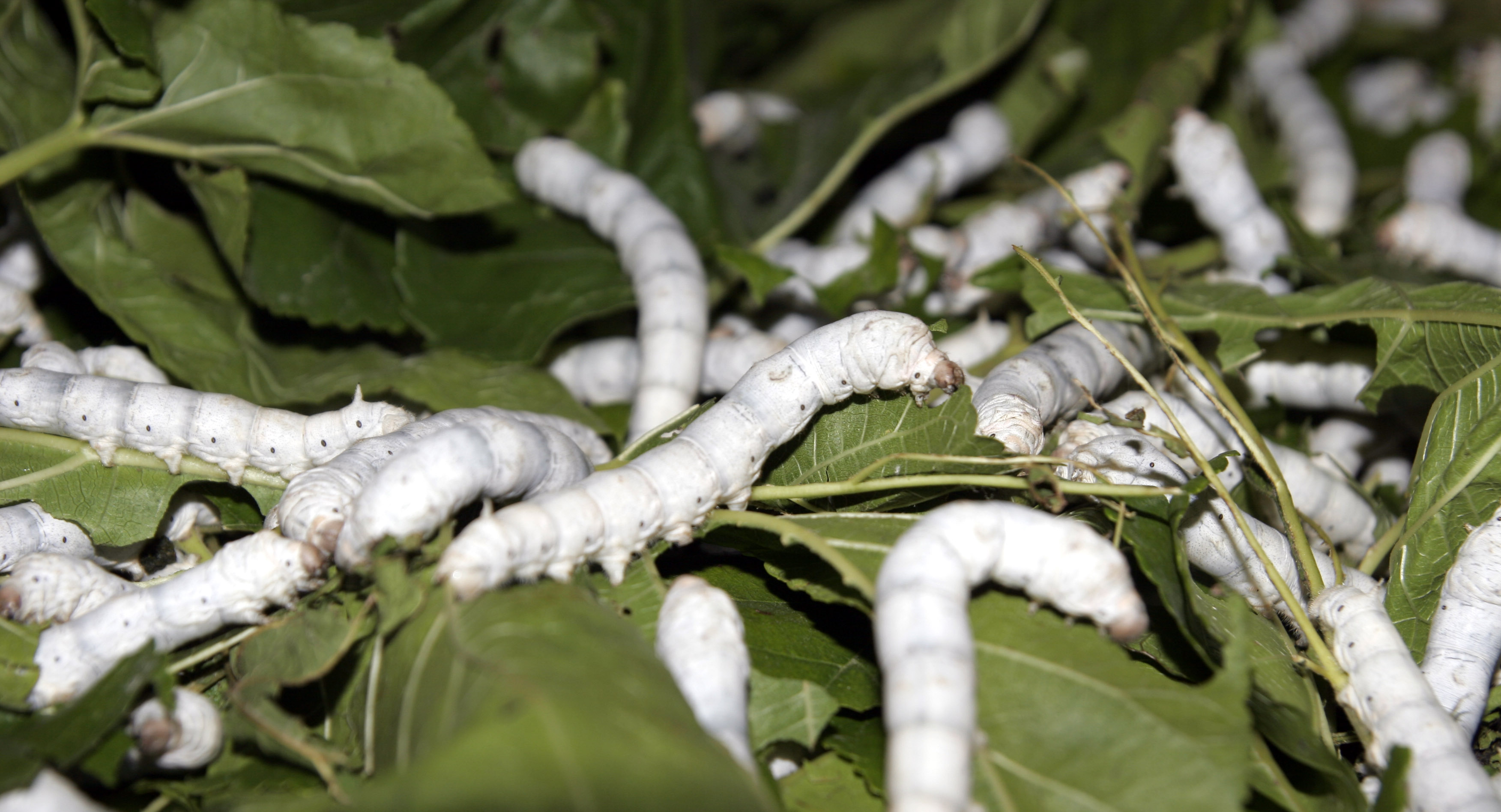
By George Munene
According to the Kenya Agricultural and Research Organisation (KALRO) with proper modalities, farmers can fetch up to Sh1.8 million annually rearing silkworms on one acre.
Dubbed ‘Queen of Textiles’ as it has often been viewed as a status symbol of luxury and royalty, the demand for silk remains high. One kilogram of grade A silk cocoon fetches Sh1,207 with grades B and C earning farmers Sh966 and Sh604 respectively.
Peter Mutuku, a farmer in semi-arid Makueni County can attest to this. He first took on silkworm farming in 2018, when he saw the success his friends had with it. Earning Sh6,000 in passive income from his first batch of 300 worms, he now rears around 10,000 worms.
“We get the worms in their second cycle from Makueni-based Tosheka Industry, feed them for 19 days when they start spinning-- the process of producing yarn to form cocoons. At this stage, we wrap the worm in a newspaper for seven days so that the silk can be easily harvested,” Mutuku explained in an interview with BBC’s Smart Money.
The silk is harvested as a cocoon which has the outside silk fiber and a living pupa within it for weighing before paying the farmer.
Related News: Women group ventures into silkworm farming for steady and more income
Related News: Research organization buying silkworms from farmers
Tosheka outsources the unrefined silk from 15 farmers in Makueni each with a capacity to produce 15 kilograms per cycle of 19-21 days.
This means each farmer can earn up to Sh7, 245 every 40 days in supplementary income as the practice is not demanding and doesn't stop them from carrying out other economic activities.
The pupa is then degummed-- separating the pupa which is used as an alternative protein and fiber which spurn into silk. This is done by flossing and then spinning the silk fiber. This forms yarn than is weived and made into the finished material.

According to Teresa Njue, the company’s production coordinator the company sought out silk farmers to substitute for the costlier cotton.
Tosheka settled on the Eris Silkworm as it is suited to the county’s arid climate as well as being eco-friendly.
Related News: Government sets up research centre to promote silkworm farming in western Kenya
“We have found that these are products that are very much needed in the market. We have local designers who seek out our fabric as most of the market is saturated with bland Chinese imports and African fabrics which are either Kitenge or Kanga, They have been yearning for something they can create on their own,” said company founder Lucy Lau Bigham.
The company currently exports about Sh603.7 million every quarter, mainly to Europe and the US, and has an impressive 30-40 per cent return on investment.
The company’s major obstacles have been meeting the minimum tonnage required by buyers and consistency in the quality and aesthetic of the handmade silk fiber.